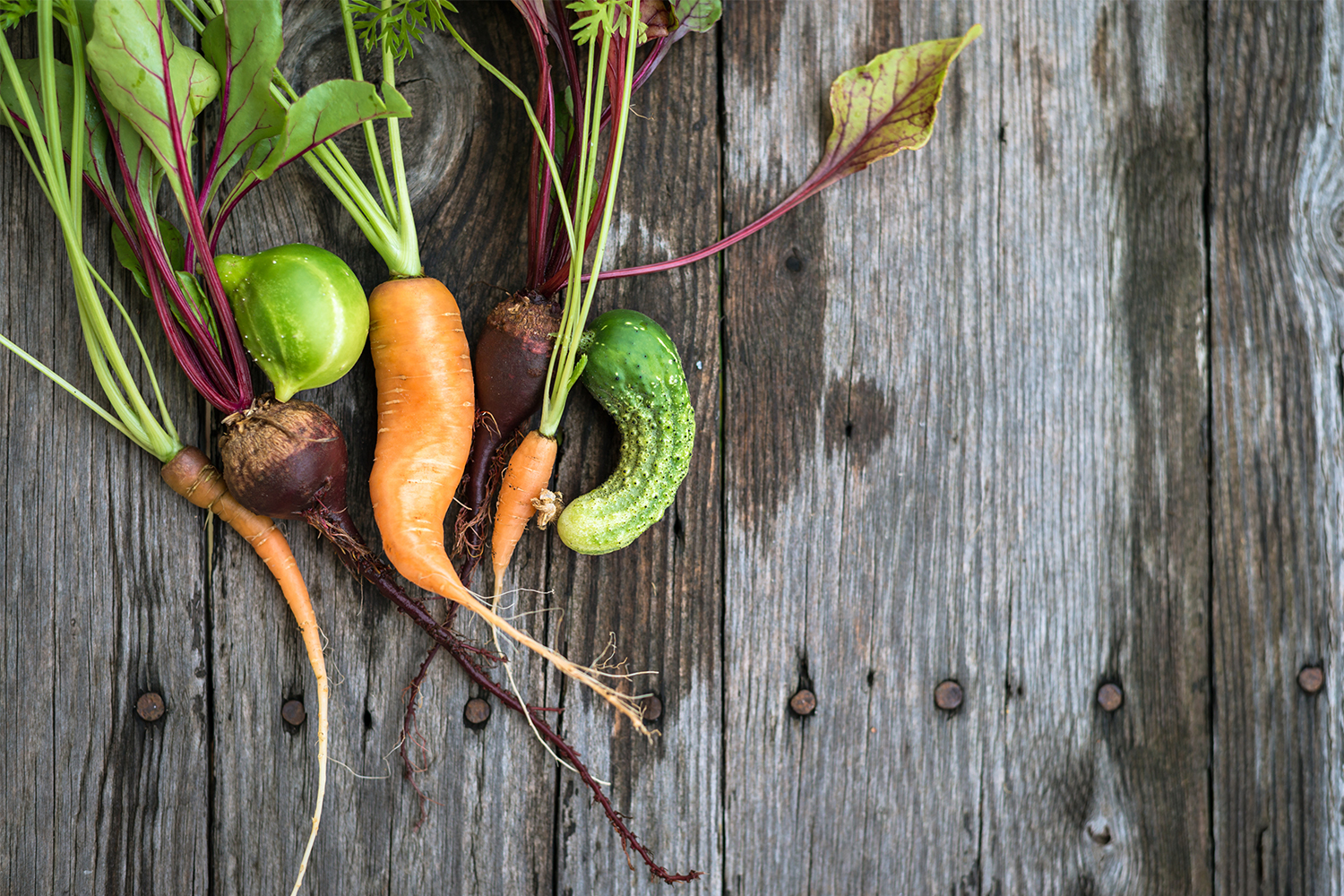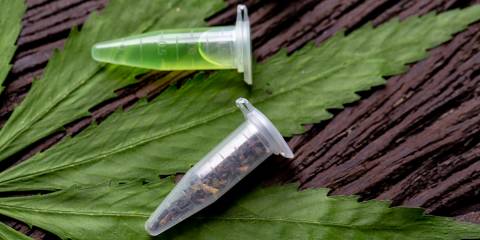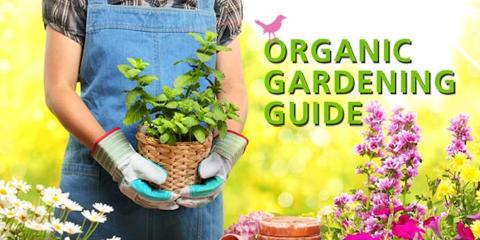It’s what’s on the inside that counts. At least that’s what everyone says. But when it comes to fruit and vegetables that don’t meet rigorous cosmetic standards, it’s a different story.
We’re talking about twisted carrots, oversized zucchinis, curly green beans, and the like that are just as nutritious and delicious as their prettier versions, but deemed “ugly produce” because their size, shape, or color is different. And that means most of this imperfect produce never even makes it to the grocery store.
According to Natural Resources Defense Council (NRDC), up to 40 percent of our food supply goes uneaten every year, which includes roughly 20 billion pounds of produce that’s lost at the farm level. It’s a terrible waste because this nutritious resource could be feeding the one in eight Americans who don’t have enough to eat or the 87 percent of us who aren’t piling enough fruit and veggies on our plates.
Stringent Standards
Over the past few decades, cosmetic standards for fruit and vegetables have become so narrow that consumers aren’t accustomed to seeing anything but perfect produce in stores. “Today, we often associate consistency and visual perfection with quality,” explains JoAnne Berkenkamp, senior advocate at NRDC. As a result, “growers have to deliver produce that meets these stringent guidelines. But nature produces things that are not perfect,” she adds. It always has.
Still, we find ourselves surrounded by colorful pyramids of uniform fruit and veggies that may look beautiful, but come at a cost—the loss of massive amounts of quality food that doesn’t measure up—on the outside. We’re not talking about produce that is rotten or inedible, we’re talking about tasty items that get tossed because of their less-than-perfect appearance.
The Loss from Farm to Fork
“Fewer and fewer of us actually grow our own food, and we often don’t have a good sense of where it comes from,” says Berkenkamp. It’s not necessarily that there are more cosmetic imperfections today; it’s just that fewer fruits and veggies are meeting retailers’ strict aesthetic standards.
The rate of produce imperfection can be tied to a variety of factors—high/low temperatures, excessive rainfall, hail, drought, even wind. “If you leave zucchini in the field 24 hours too long during a blast of hot weather, it can grow so fast it becomes unsellable. That means great food goes to waste,” says Berkenkamp. Similarly, with so many tomatoes being imported from hothouses in Canada and Mexico, some of the varieties grown outdoors in the US can have a hard time competing with the perfectly round red versions. Since 1945 the US Department of Agriculture (USDA) has classified levels of produce quality, but many supermarkets surpass those ratings and impose more rigid standards, thinking that’s what their shoppers want.
Then there’s the environmental impact. If a grower produces 100 acres of produce, but only 80 percent of it meets cosmetic standards, that’s 20 percent of water, labor, and fertilizer that’s wasted. Adds Berkenkamp, “If a farmer doesn’t have a buyer for his or her produce, it gets plowed under, composted, or used for animal feed.” Less frequently, it gets thrown into landfills, where it produces methane, a powerful contributor to climate change.
According to Jordan Figueiredo, founder of The Ugly Fruit and Vegetable Campaign, “25 percent of all fresh water goes to food we never eat, which also contributes to 7 percent of human-caused greenhouse gas emissions.”
Christina O’Sullivan of Feedback, an organization that campaigns to end food waste at every level of the food system, adds, “When food gets thrown in the trash it represents a waste of all the precious resources used to grow it. Food production is the biggest impact we have on the planet—it’s crazy that we waste so much.”
The Ugly Produce Movement
Figueiredo was inspired to do something about the food waste in this country after reading Jonathan Bloom’s book American Wasteland. “At the time, hardly anyone was talking about the issue of ugly produce,” he says. “I used to eat a lot of crappy fast food, but discovering ugly produce opened up a whole new world for me.” Today, he strives to educate people about the issue and introduce them to alternate possibilities.
Because farms that grow for the fresh market are typically different from farms that grow for freezing and canning companies, shipping fresh ugly produce to processors is not as easy as it may seem. Some farmers give away their ugly produce to people in need. California, for instance, has a program to encourage growers to donate surplus fruit and vegetables, and New York State just passed a Farm to Foodbank bill to help farmers give food to the hungry.
More and more, ugly produce is being bought by colleges, hotels, and museums, where it’s chopped, blended, and/or prepared for tasty meals. This effort has been perpetuated by organizations such as Compass USA, which created the Imperfectly Delicious Program. It uses cosmetically imperfect produce in the food service industry, which has broader specifications for produce than do many of the large chain grocers.
“The MisFits brand is now in about five different national supermarket chains,” notes Figueiredo. Instead of buying only produce that meets stringent standards, these 400-plus grocers commit to buying enough for a small island of ugly produce that’s discounted by up to 50 percent.
Future Shoppers
School gardening programs and farm camps help children, our future shoppers, understand where food comes from so they learn that apples are not always a certain size or perfectly red. Rather than turn their noses up at ugly produce, kids often prefer it because it’s unique and funny, and doesn’t look like everything else.
“Kids totally get the ugly produce problem and often write to me asking what they can do to help,” Figueiredo says.
They are the future. And they matter. But today, “Consumers can change the world with their forks,” adds Berkenkamp. We just have to try.
How You Can Help
- Seek out stores that sell ugly produce and buy it!
- Try farm “gleaning”—rescue ugly produce from farms and donate it to those in need.
- Enroll your children in farm camps or growing programs at school.
- Encourage your local grocers to offer imperfect produce options.
- Encourage reuse of ugly produce by signing the petition at www.EndFoodWaste.org/petition-.html
- Join the “love the ugly” movement, #UglyReallyIsBeautiful, on Twitter, Facebook, We Heart It, and Instagram.





